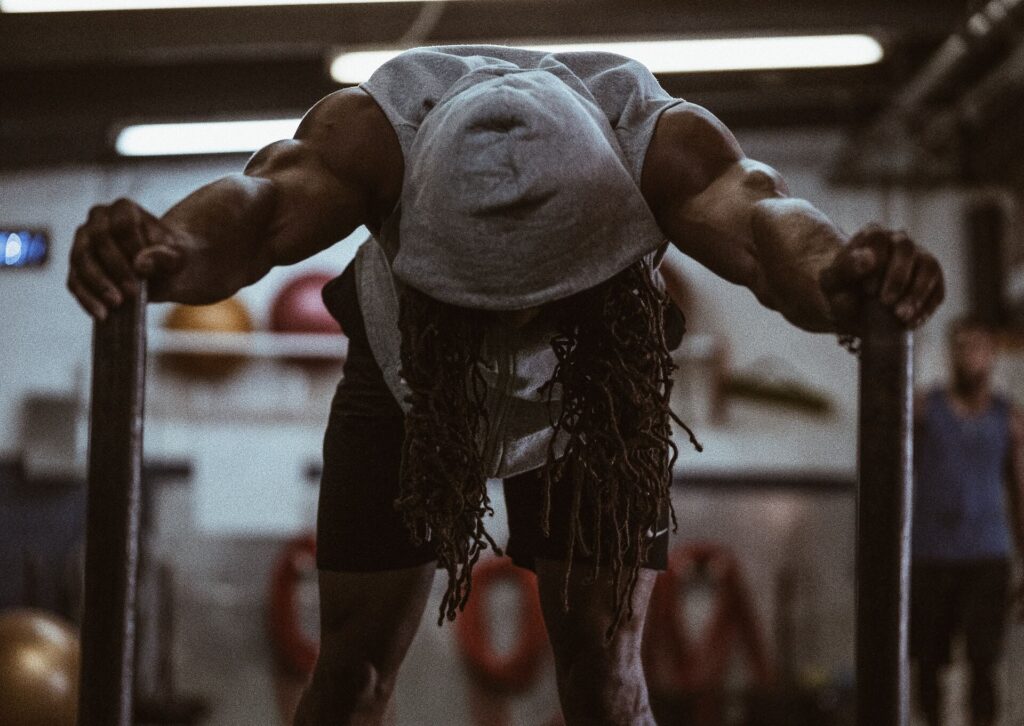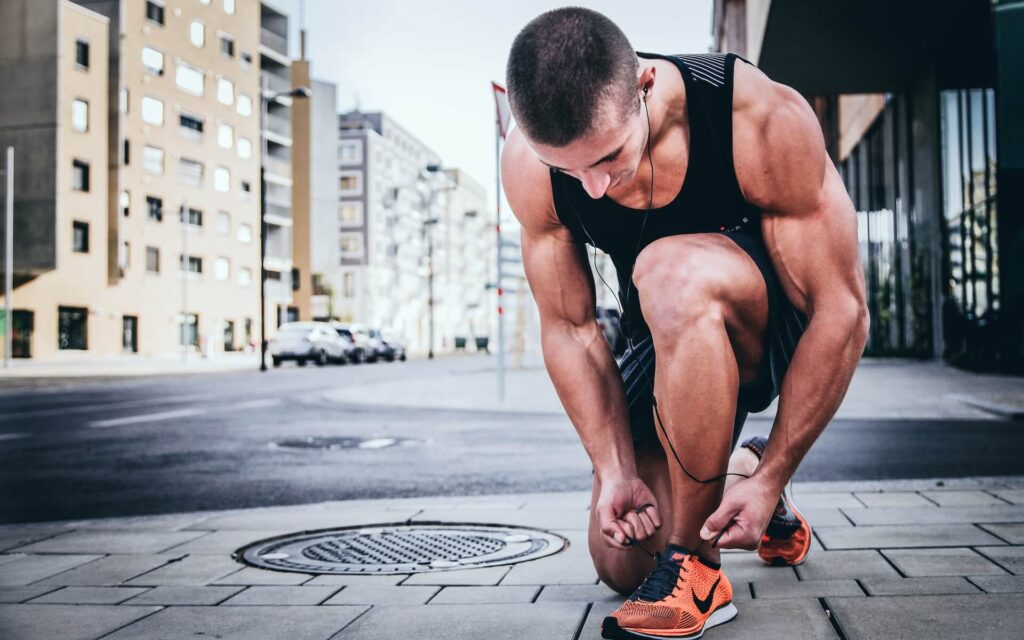Will I Gain Muscle On TRT?
Yes, you can build muscle on Testosterone Replacement Therapy. TRT is often prescribed to treat low testosterone levels, which can affect muscle mass and strength. By restoring testosterone levels to a normal range, TRT can help reverse the effects of hypogonadism, including muscle loss or weakness.
Patients on TRT often report increased muscle strength and a greater ease in building muscle mass, especially when combined with resistance training and a proper diet. However, the extent of muscle growth can vary depending on individual factors like age, baseline testosterone levels, and overall health and fitness.
It’s important to note that TRT should only be used under medical supervision. It’s not a shortcut for muscle gain in individuals with normal testosterone levels. Overuse or misuse can lead to adverse effects.
TRT is part of a comprehensive treatment plan and should be coupled with a healthy lifestyle for the best results in muscle building and overall well-being. As one of the premier testosterone clinics in Denver, Evolve Wellness and Health helps people reach their health goals for a better, happier life.
Understanding Testosterone and Muscle Growth

Testosterone, a key hormone in both men and women, plays a pivotal role in muscle growth and development. Primarily known as a male sex hormone, its influence extends beyond sexual characteristics, deeply impacting muscle physiology.
Muscle mass and strength are partially regulated by testosterone levels. This hormone stimulates protein synthesis – the foundational process where cells construct proteins, crucial for muscle building and repair.
Low testosterone levels can lead to decreased muscle mass and strength. This decline not only affects physical appearance but also has implications for overall health and functionality. Reduced muscle mass can lead to decreased metabolism, increased fat accumulation, and a higher risk of injuries due to weakened muscles.
Furthermore, testosterone is involved in the reduction of muscle atrophy – the process of muscle tissue wasting away. It enhances the differentiation and growth of muscle cells, contributing to greater muscle volume and strength. The hormone also plays a role in reducing body fat, which can indirectly support better muscle definition and growth.
How TRT Helps With Muscle Gains

At its core, TRT works by supplementing the body’s natural testosterone levels. Testosterone is instrumental on how the body builds new proteins, which are the building blocks of muscle.
By increasing testosterone levels, TRT enhances the body’s ability to create muscle tissue. This leads to improvements in muscle mass and strength, which are often noticeable in individuals undergoing the therapy.
TRT’s impact on muscle is not just about increasing size; it also involves improving muscle quality and strength. Higher testosterone levels facilitate better muscle recovery and regeneration.
This means after workouts, muscles can repair themselves more efficiently, leading to better gains from exercise routines. Additionally, testosterone plays a role in reducing body fat, which can further help in accentuating muscle definition and growth.
It’s important to note that the muscle-building benefits of TRT are most significant in individuals who have a marked deficiency in testosterone. For someone with already normal testosterone levels, TRT is unlikely to produce the same results. Also, the effectiveness of TRT can vary depending on factors like age, overall health, and lifestyle choices.
While TRT can aid in muscle development, it’s not a standalone solution. It’s most effective when combined with resistance training and a balanced diet. Strength training exercises, in particular, synergize with TRT, maximizing muscle growth and strength.
Misconceptions and Misuse of TRT

As an experienced nurse practitioner, I’ve seen a concerning trend where TRT is viewed as a shortcut to building lean muscle. This is perhaps the most common and dangerous misconception about the therapy.
TRT is specifically designed for individuals with clinically low testosterone levels. Its primary aim is to restore these levels to a normal range.
However, it is not intended as a muscle enhancement tool for individuals with normal testosterone levels. Misuse of TRT in the pursuit of increasing muscle mass, especially among those who do not medically need it, can lead to significant health risks.
Excessive use of testosterone can result in serious side effects, including an increased risk of heart disease, liver dysfunction, hormonal imbalances, and other metabolic complications.
It’s also important to note that overuse of TRT can lead to a decrease in the body’s natural ability to produce testosterone, creating a dependency on the therapy.
Furthermore, the effectiveness of TRT in muscle building is often overestimated. While it can help restore muscle mass in those with testosterone deficiency, it doesn’t guarantee extraordinary muscle growth in all cases. Factors like genetics, age, and lifestyle play a crucial role in how the body responds to the therapy.
Optimizing Muscle Growth On TRT

With my experience with patients, I’ve learned that while TRT can aid muscle growth, it’s most effective when combined with a holistic approach to health and fitness. TRT is not a standalone solution for boosting lean muscle mass; it’s part of a broader strategy that includes proper diet and exercise.
Diet plays a crucial role in muscle development. For patients on TRT, I recommend a balanced diet rich in protein, as proteins are the building blocks of muscle. Hydration and micronutrients shouldn’t be overlooked, as they contribute to optimal bodily functions, which support muscle growth and recovery.
Exercise, particularly strength training, is one of the most fundamental approaches to stimulate muscle growth. Resistance exercises work synergistically with increased testosterone levels from TRT to maximize muscle growth and strength. It’s not just about lifting weights; it’s about engaging in a consistent, well-rounded exercise routine that challenges the muscles and promotes growth.
Patients on TRT should also be aware of the importance of rest and recovery. Adequate sleep and allowing time for muscles to recover are as important as the workout itself. Over-exercising can lead to injuries and counteract the benefits of testosterone replacement therapy.
Final Thoughts On Gaining Muscle With TRT
In conclusion, Testosterone Replacement Therapy can be a valuable treatment for muscle growth in individuals with low testosterone levels. However, it’s important to recognize that TRT is not a one-size-fits-all solution for muscle building. Its effectiveness is enhanced when combined with a balanced diet, regular exercise, and proper rest.
Misuse and overreliance on TRT can lead to significant health risks, underscoring the importance of medical supervision and a holistic approach to health. TRT should be considered a part of a comprehensive strategy for improved musculoskeletal health and overall well-being, rather than a standalone quick fix for muscle gain.

Ashlee is the Medical Director at Evolve Wellness and Health in Englewood, Colorado. She obtained her Master of Science in Nursing in 2006 from Colorado State University-Pueblo, and is board-certified through the American Nurses Credentialing Center as an Acute Care Nurse Practitioner. She has practiced in the field of hormone replacement therapy (both male and female) and medical weight loss since 2013.


